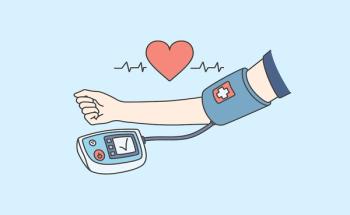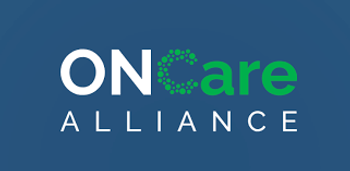
- February 2024
- Volume 30
- Issue 2
- Pages: SP110
Rule Change for Patient Navigation Billing Is a Boon to Oncology Care, Practice Leaders Say
The CMS 2024 Medicare Physician Fee Schedule (PFS) Final Rule,1 approved in November 2023, brought big changes to oncology care, notably by allowing patient navigation services to be reimbursed under new codes. With this rule in place, experts predict more patients will receive patient navigation, allowing them to talk to an adviser while receiving treatment and providing someone to ensure they get to appointments, leading to more timely care.
The Medicare billing codes for principal illness navigation (PIN) services1 were instituted after results from studies across nearly 2 decades showed that navigation helps patients who are overwhelmed with the process of cancer care or need help managing their appointments.2,3
The clinical benefits of having a patient navigator are widely acknowledged: In a survey by the American Cancer Society Cancer Action Network, 91% of cancer patients and survivors responded that access to a patient navigator is very important.4
According to the billing consultant CodingIntel, navigation services have the following parameters5:
- Services can only be performed in a nonfacility setting.
- Payment requires documented, informed consent of the patient, who must agree to the services.
- Patients must have an initiating visit, which is defined
in the rule. - Navigation services can be performed by someone who has the same disease or condition as the patient.
- Services are for patients who are expected to have their disease for at least 3 months.
- There is no time limit on the duration of services.
Practice leaders who spoke with Evidence-Based Oncology highlighted multiple benefits that patients will receive from this change—along with financial help that will bring stability to practices.
New PFS Covers Multiple Services
The PFS Final Rule, which was approved on November 2, 2023, and took effect January 1, 2024, addresses payment for navigation services. The
rule allows patient navigation to be separately billed and reimbursed by Medicare, instead of practices only receiving support for navigation as part of a payment model that includes other services. In addition to patient navigation services, the new PFS covers caregiver training services, expanded access to telehealth services, assessment of social determinants of health, and community health integration services.1
“The value for the patients with navigators is a navigator can meet the patient where they’re at, knowing what resources [patients] have available to them and what resources they need,” said Elizabeth Spencer, MBA, BSN, RN, OCN, manager of clinical services for OneOncology, a platform that serves 20 community practices.
Navigators work with patients one-on-one to encourage adherence to treatment, reengagement in care, and improved communication; they also help patients gain access to social services during treatment.
Patients can meet with their navigator weekly, monthly, or quarterly in order to discuss all options for primary and secondary care. This can include food services, housing assistance, transportation, and health insurance. Patient navigators can also accompany patients to appointments as well as give timely reminders for these scheduled appointments.6
“I always think of navigation as air traffic control. They’re getting patients from point A to Z with the least amount of turbulence possible,” said Heather Wood, RN, OCN, clinical education specialist at The US Oncology Network. “One of the things that [patient navigation is] known for is kind of that proactive reach to patients, that proactive care, which is going to decrease that total cost of care for patients.”
According to the American Cancer Society,4 patient navigation can help “address health-related social needs and [help] reduce disparities in communities of color by providing access to disease prevention education, conducting community outreach, and facilitating public education campaigns.”
Benefits for Patients
When patients receive a cancer diagnosis, there are many moving parts to ensure that everything gets done, whether it’s a visit with the oncologist, laboratory tests, infusion appointments, or consults with specialists such as cardiologists, who monitor the effects of treatment. Spencer pointed out that patients must deal with not only their cancer diagnosis but also the logistics of care.
“There are so many treatment plans that include multiple treatment modalities that the patient needs to navigate. It’s maybe appointments with surgeons, radiation oncologists, or just pretreatment testing or procedures you need prior to even starting treatment,” she said. “And a lot of these services come at a cost for the patients—a time cost and a financial cost.”
Shannon Iakiri, NP, MSN, chief clinical operations officer at Cancer & Hematology Centers of Western Michigan, said that providing navigation resources for patients before the new rule took effect also was costly to community oncology practices. At times, providing services meant finding ways to pay for them elsewhere in the practice.
“A community oncology practice being able to have additional funds to pay for someone who can help them coordinate [services] is beyond beneficial to the patient,” she said. “I think that coordination, that navigation, just that person to help do that—that was a cost that our organization just took on before. We have had navigators; I think this will only enhance the ability to add navigation.”
Spencer agreed, saying that when patient needs are identified, time should be given to get the resources. But this time often came from doctors who were trying to manage the disease. “This policy change will help to grow these departments…cutting down the patient time for these things that are important,” she said. “Having increased services, navigation services, and providing reimbursement allows navigator programs to have more bandwidth to be able to pivot based on the needs of the patient without delay.”
Increased access to navigation services will also allow practices to be more proactive, Spencer and Iakiri agreed. This could be as easy as picking up the phone and checking in with a patient, Iakiri said. Being aware of an issue such as a lack of transportation would allow the patient to get information on addressing this as soon as possible, Spencer said.
Both Iakiri and Spencer said that making patient navigation affordable for all can help underserved patients no matter where they live. The term “underserved” often is associated with an urban setting, Iakiri said, but even if the cancer center is located in an urban center, that doesn’t mean the community is being served. Centers may only be helping “the people who show up [at] their door,” she said.
“In community oncology, we know the services at the ground level within a particular 6-block area, within a downtown area,” Iakiri said. “Our navigators dig into that and figure out, per area, what is available.”
Support for Telehealth, Social Need Assessment
Iakiri said rural areas are also helped when patient navigation via telehealth is reimbursed in cases where patients cannot make it to a clinic consistently. Telehealth can be beneficial for all patients because it allows for appointments to be scheduled quickly when an in-person visit with a physician isn’t needed.
“If I can provide a telehealth visit…[where] we can call, check in that they’re [taking] their drug, that is 1 less visit they have to drive into the city or drive wherever, and they can keep working,” Iakiri said. What was a 2-hour trek to and from the clinic becomes a 30-minute call, she said.
“As new things move forward [in] what’s covered and what’s not covered, [telehealth] needs to be the standard, so that these services all can be offered in virtual ways,” Spencer said. “In the world of navigation, you’re really communicating and providing information, so those visits are best suited for telehealth.”
Wood said that telehealth being reimbursed also allows for a more centralized approach to making services accessible. “The other thing thinking about this ruling and telehealth is it would allow for centralized services, and this is something that we have within The US Oncology Network,” she said. “We had a shared services model that practices can opt into or not, but this allows clinicians to reach patients across a wide demographic area; once again, getting to those patients that are most vulnerable.”
Patient navigators can make sure that physician visits run smoothly, Iakiri said, by ensuring appointments are scheduled in time for test results, such as CT scans, to be read by physicians during the appointment. Spencer added that navigators can be someone to talk to about medical anxiety that comes from the treatment; they can walk patients through being scared to take necessary tests.
Jessica Neeb, MSN, OCN, CNML, senior director of practice transformation and quality at The US Oncology Network, said that nonclinical navigators were a big piece of these new approvals. “The nonclinical navigators [were] a big piece of this. [Being] the community health workers in the community, they understand those community resources. The network really screens our patients for health-related social needs [and] is able to make those connections…to have nonclinical navigators or community health workers as part of the practice strategy,” she said.
Wood pointed out that there will be a learning curve for nurse navigators who did a lot of the roles of patient navigation in an unofficial capacity.
“Although nurses want to be validated for the work that they do, it is just a switch in our nursing brain to say, ‘Oh, this is a service I rendered and provided that we can bill for.’ I think there’s going to need to be a lot of education for the navigators, really just wrapping their brains around that,” she said.
Financial Help for Practices
The financial benefit of the rule change for practices is noteworthy. The change could determine whether practices can afford to provide navigation services. Iakiri said that both the Oncology Care Model, which concluded in 2022, and the Enhancing Oncology Model (EOM), which started in July 2023, evaluate practices based on total cost of care. This dedicated reimbursement for patient navigation is a great step to controlling cost of care overall, she said.
EOM had been paying practices much less for essential services required under the model, which include navigation. Monthly payments dropped from $160 to $70 per patient, putting many navigation programs in jeopardy. Having this new code changes the “cost of care” math for EOM practices.
“If practices have invested in things like navigation, social work, community health workers, and, during that, screening for health-related social needs to really understand the areas where patients are lacking [and] where there are gaps…I think this is where it starts to pay off and [it allows] practices to be reimbursed for a lot of those things that they were likely already doing,” Neeb said.
Iakiri added, “If you have a navigator who’s trying to streamline when the appointments are…that is 1 less time that the patient has to take off work. Their employer doesn’t lose days of work, which helps the overall cost of health care.”
Clinical trial discussions. Greater access to navigators will promote practices’ willingness to talk to patients about enrolling in clinical trials, Iakiri said, creating another financial benefit for patients. “We know that when patients are at a clinical trial, that that is beneficial from a cost perspective to the insurance company [and] to the health care system at large,” she said.
According to the National Cancer Institute,7 costs of a clinical trial are often shared by health insurance, including Medicare and Medicaid, and study sponsors. Results of a study published in JCO Oncology Practice found that health care payers saved an average of $6663 per month during the time of participation in a second-line clinical trial for patients with metastatic non–small cell lung cancer.8
“People have that stigma that a clinical trial is a last-ditch effort. And that’s not true,” Spencer said. “People outside of health care don’t understand that [a] clinical trial can be an incredible first option.”
Patient cost sharing. Spencer said the short-term financial benefits of navigation reimbursement will probably not be huge, and cost sharing with patients is possible, which could be difficult to manage at first.
“I think a lot of practices, because it’s the right thing to do, often just eat the cost and do what they need to do,” Spencer said. “For patients, it might not be a financial benefit, but it is a benefit to the patient, certainly, and to the clinic.”
Navigation will help patients avoid emergency department visits, a key metric used to evaluate practices.9 Iakiri also said that she believes costs for navigators shouldn’t be shared with the patient, due to it being a service that is provided and counterintuitive to the reasoning behind reimbursing patient navigation. “It should be a standard of care that patients are navigated, and they shouldn’t have to [pay] the cost of it,” she said.
Spencer pointed out that patients often have to decide between seeking out the health care they need and feeding their families, which would be further exacerbated if patients had to share costs on patient navigation. “Five dollars is different for all people; $10 is different. What makes or breaks what I can afford is different for everybody…. Sometimes $5 is all they have,” she said.
As patient navigation takes off, it is vital that the clinical benefits of navigation aren’t denied to patients who cannot pay. Reimbursement for navigation is a good first step to making sure that navigation is financially feasible, but more work will be needed, the practice leaders said.
Patient Navigation Poised to Expand
It is widely agreed that patient navigation is helpful for patients, but only 54% of patients have encountered a navigator.4 Reimbursement for these services is a beneficial first step in ensuring that inequities can be mitigated in oncology care.
“I am hopeful that this is a stepping stone, not only for navigation services but then also to get reimbursement for other critical areas of health care that are typically not reimbursed at all or not well reimbursed,” Spencer said. “Because I think the ultimate goal is to look beyond the diagnosis and look at the patient in a holistic way. And to do that you really need to have focus and reimbursement around so many services that we provide…[that practices] don’t necessarily have financial support for.”
Neeb said that these codes can help to reinvest in value-based care strategies to make sure that high-quality care for high-quality value is available for patients. But, she noted, “It will take some time to figure out the details on the specifics of the coding. I think that’s the area where practices are focusing now: to really understand the rule in detail, to make sure that we are [using] the workflows appropriately [to provide] the services the way that they are intended to be before getting all of this in place.”
Iakiri said that the next steps should be to ensure other services are reimbursed on some level so the cost doesn’t come down to the patient, as most will turn down the services if there’s a cost attached.
Reimbursement for patient navigation still has room to grow, but starting to offer it through the new rule change is a step in the right direction. It will make oncology care more equitable, reduce the cost of care by making sure patients get timely care to avoid emergency department visits, help patients set up needed appointments, and ensure all patients get support while receiving treatment for their illness.
References
1. CMS-1784-F. CMS. November 16, 2023. Accessed January 19, 2024. https://www.cms.gov/medicare/medicare-fee-service-payment/physicianfeesched/pfs-federal-regulation-notices/cms-1784-f
2. Kline RM, Rocque GB, Rohan EA, et al. Patient navigation in cancer: the business case to support clinical needs. J Oncol Pract. 2019;15(11):585-590. doi:10.1200/jop.19.00230
3. Chan RJ, Milch VE, Crawford-Williams F, et al. Patient navigation across the cancer care continuum: an overview of systematic reviews and emerging literature. CA Cancer J Clin. 2023;73(6):565-589. doi:10.3322/caac.21788
4. New Medicare reimbursement strategy for patient navigation services will better serve patients with cancer and other serious illness. News release. American Cancer Society Cancer Action Network. November 2, 2023. Accessed January 17, 2024. https://www.fightcancer.org/releases/new-medicare-reimbursement-strategy-patient-navigation-services-will-better-serve-patients
5. CMS finalizing principal illness navigation (PIN) services. CodingIntel. Updated January 18, 2024. Accessed January 31, 2024. https://bit.ly/3HHYQo2
6. STEPS to care: patient navigation. CDC. Updated February 22, 2023. Accessed January 16, 2024. https://www.cdc.gov/hiv/effective-interventions/treat/steps-to-care/dashboard/patient-navigation.html
Who pays for clinical trials? National Cancer Institute. Updated August 31, 2023. Accessed January 18, 2024. https://www.cancer.gov/research/participate/clinical-trials/paying
7. Merkhofer C, Chennupati S, Sun Q, et al. Effect of clinical trial participation on costs to payers in metastatic non-small-cell lung cancer. JCO Oncol Pract. 2021;17(8):e1225-e1234. doi:10.1200/OP.20.01092
8. Colligan EM, Ewald E, Keating NL, et al. Two innovative cancer care programs have potential to reduce utilization and spending. Med Care. 2017;55(10):873-878. doi:10.1097/MLR.0000000000000795
Articles in this issue
almost 2 years ago
The Socratic Method May Save Health Carealmost 2 years ago
KUCC Delivers Cutting-Edge Care for Urban and Rural Populationsalmost 2 years ago
Center on Health Equity and Access: February 2024almost 2 years ago
Technology Helps Community Oncology Practices Implement PCM, CCMalmost 2 years ago
Scaling Palliative Care Requires Adherence to Best Practicesalmost 2 years ago
How Real-World Evidence Can Spur Collaboration and Changes in OncologyNewsletter
Stay ahead of policy, cost, and value—subscribe to AJMC for expert insights at the intersection of clinical care and health economics.








